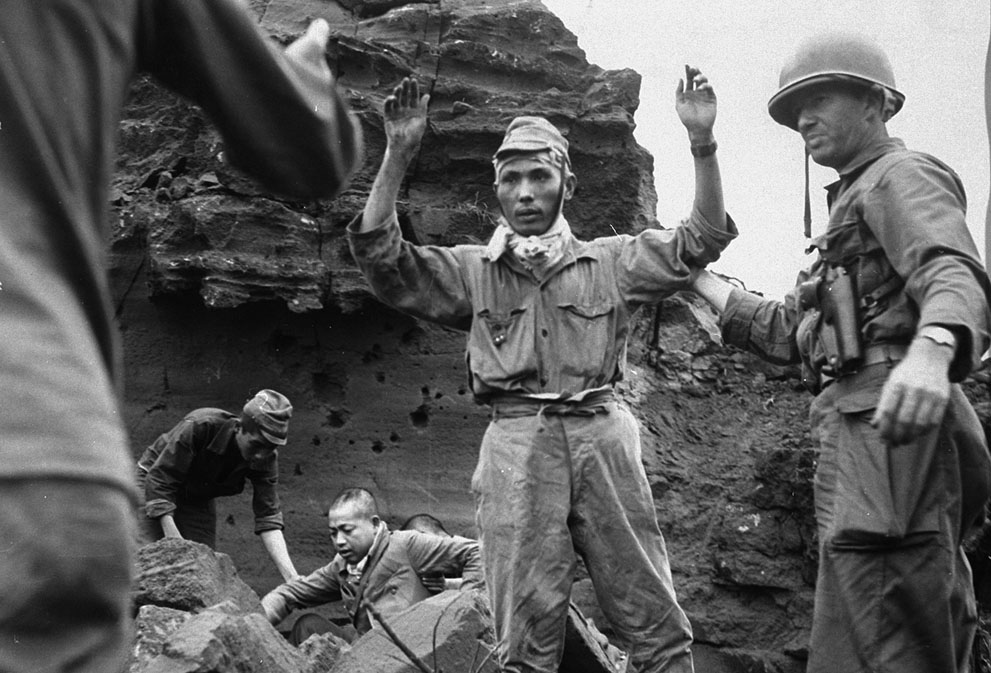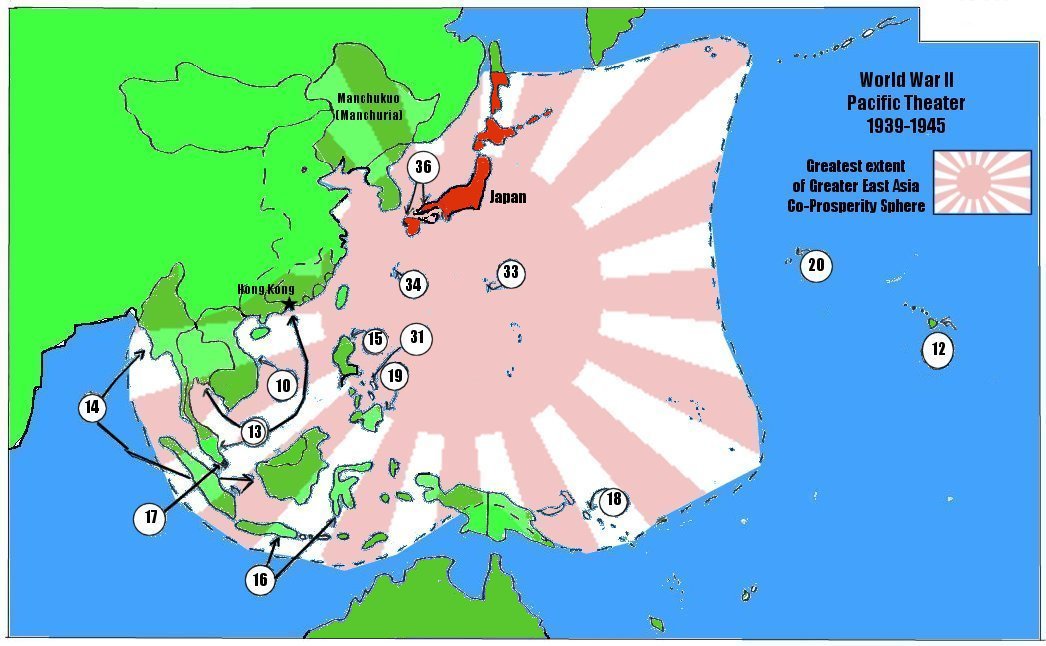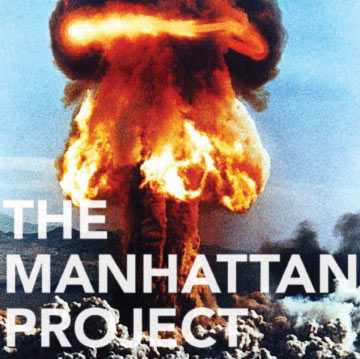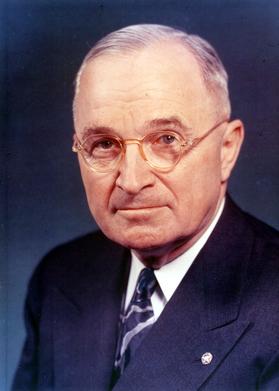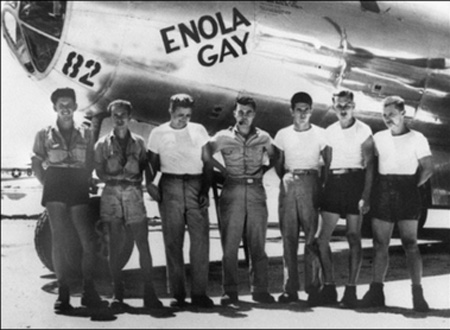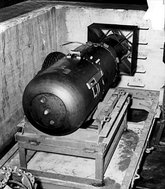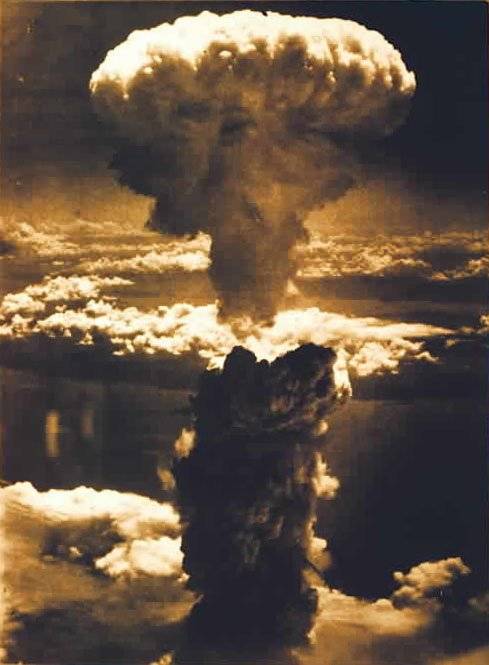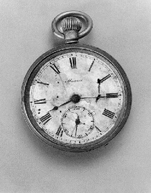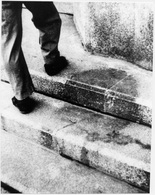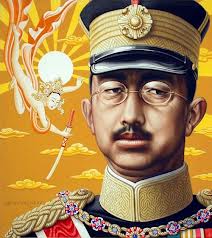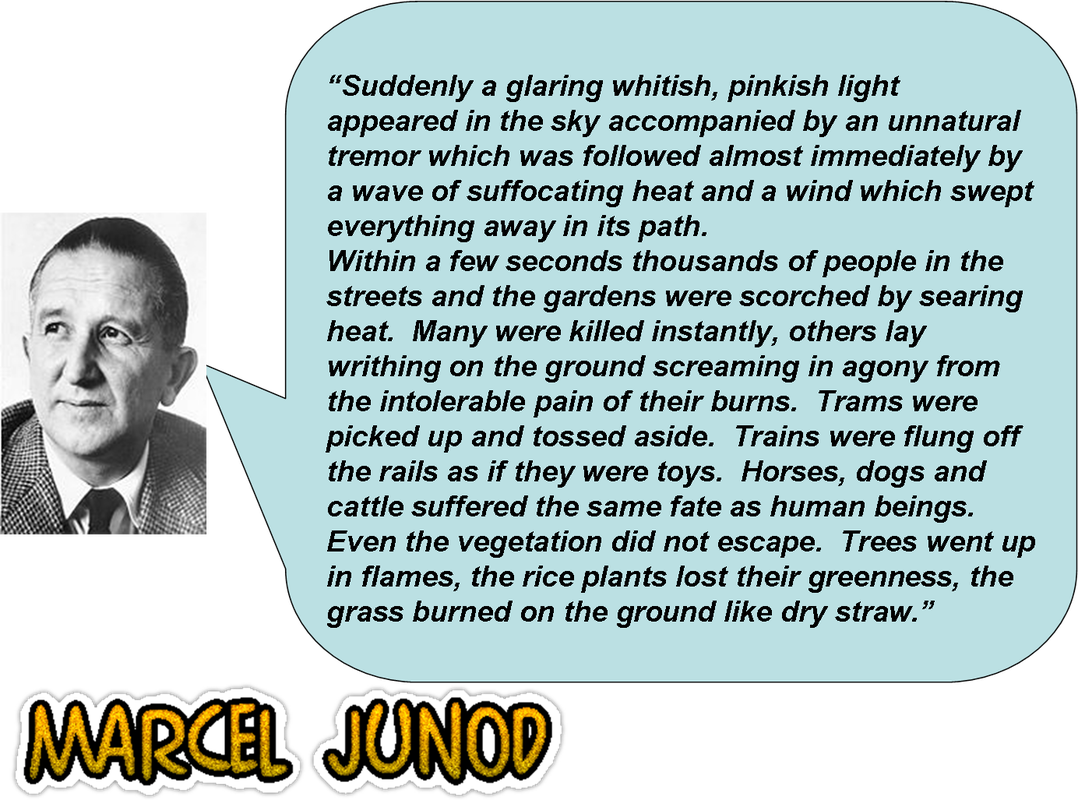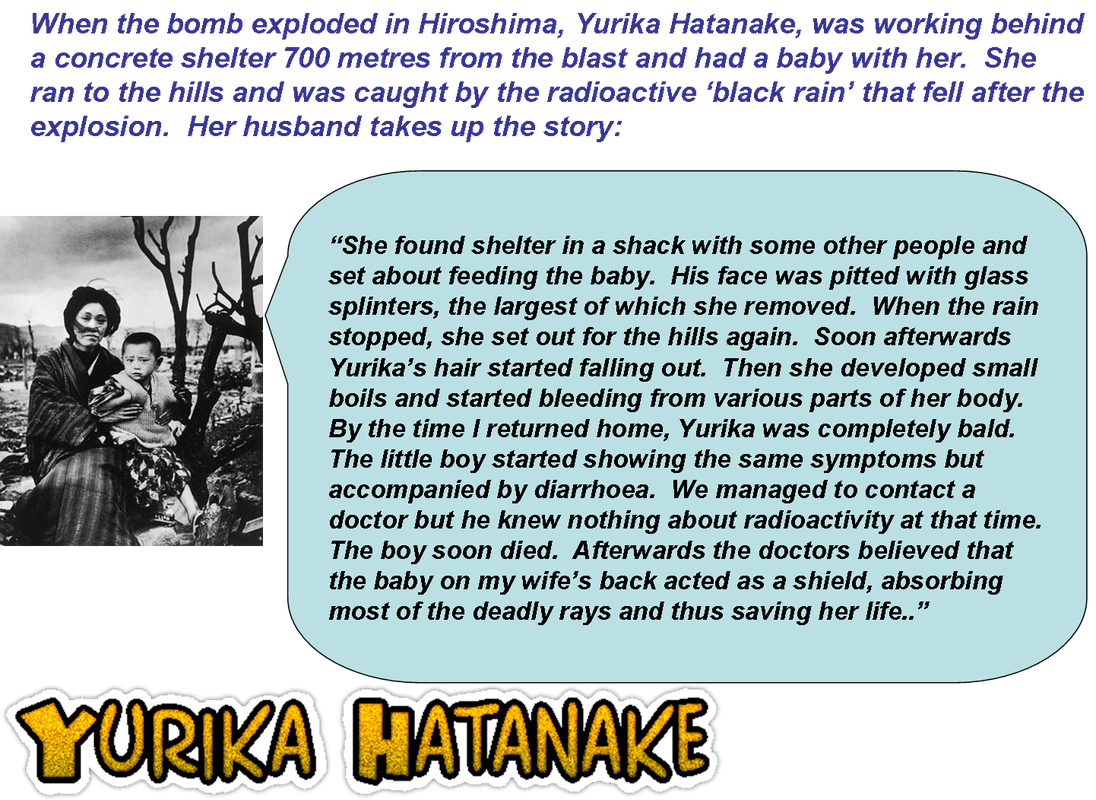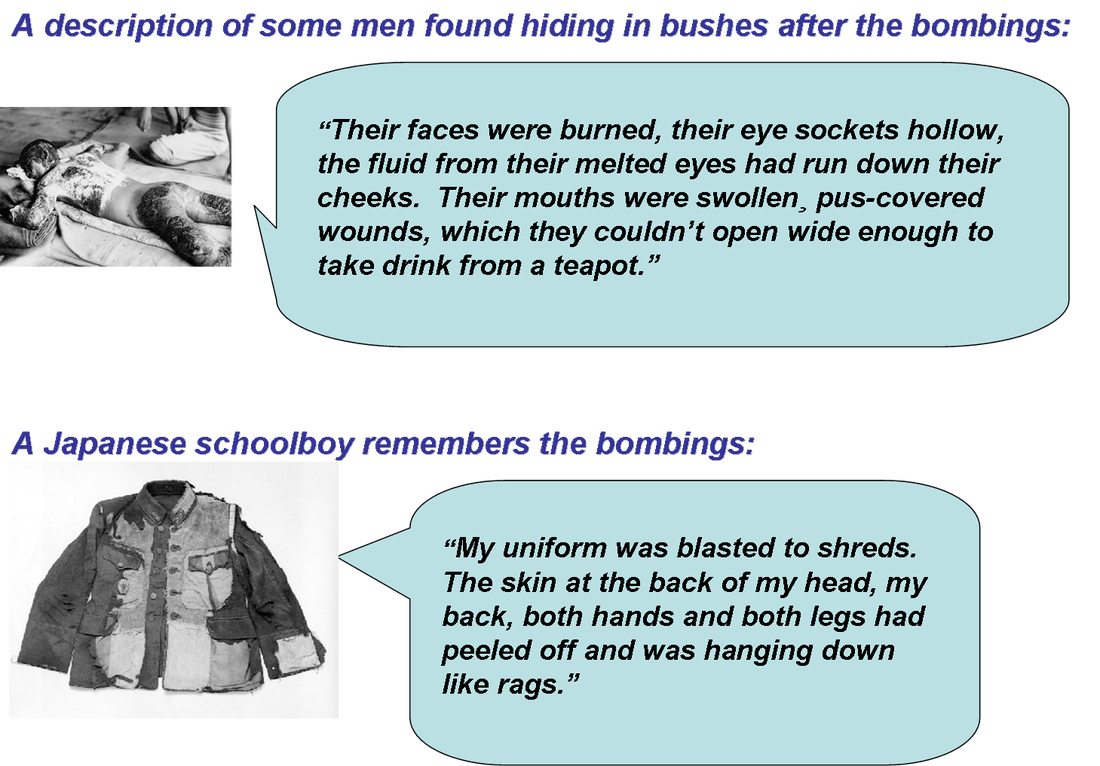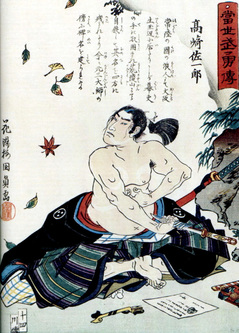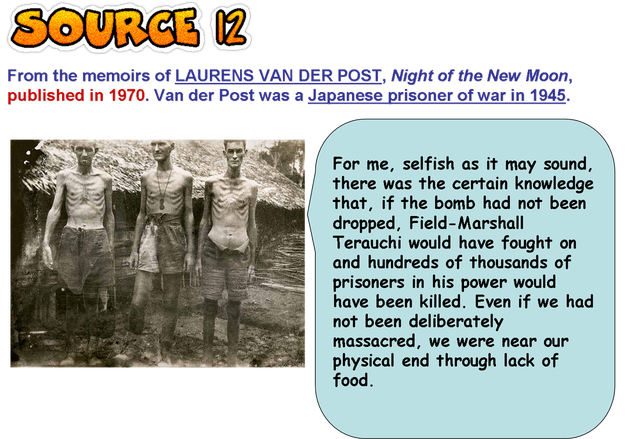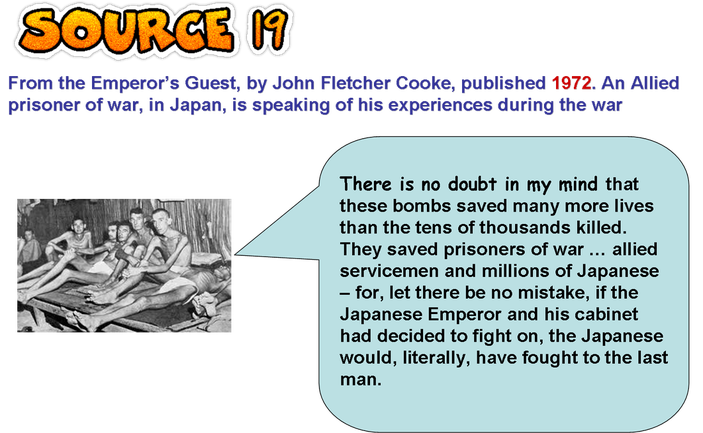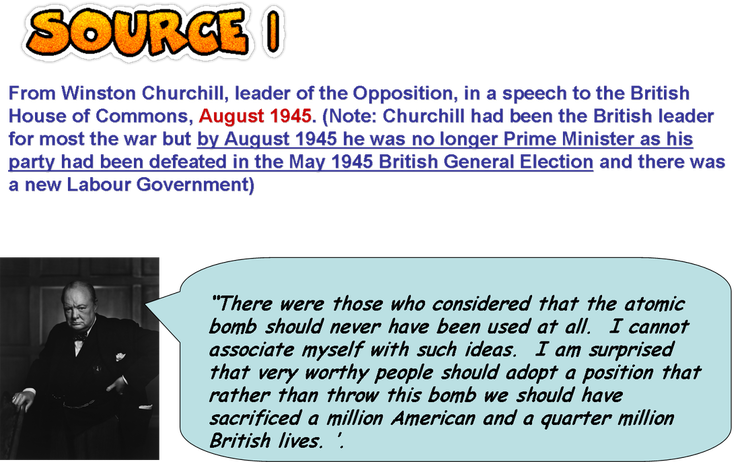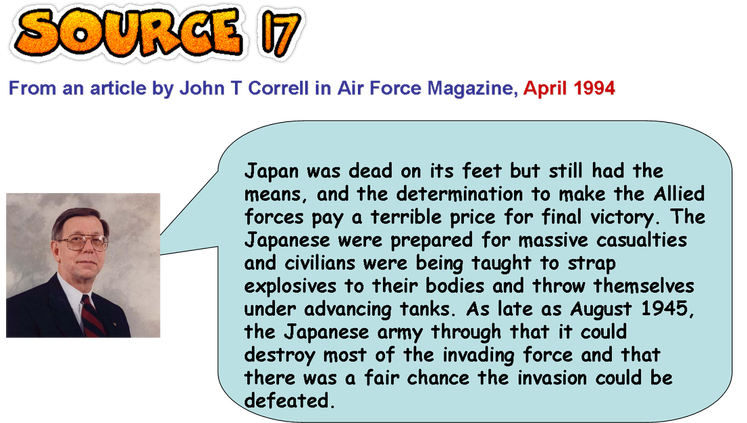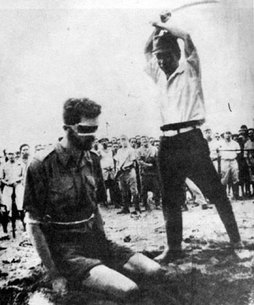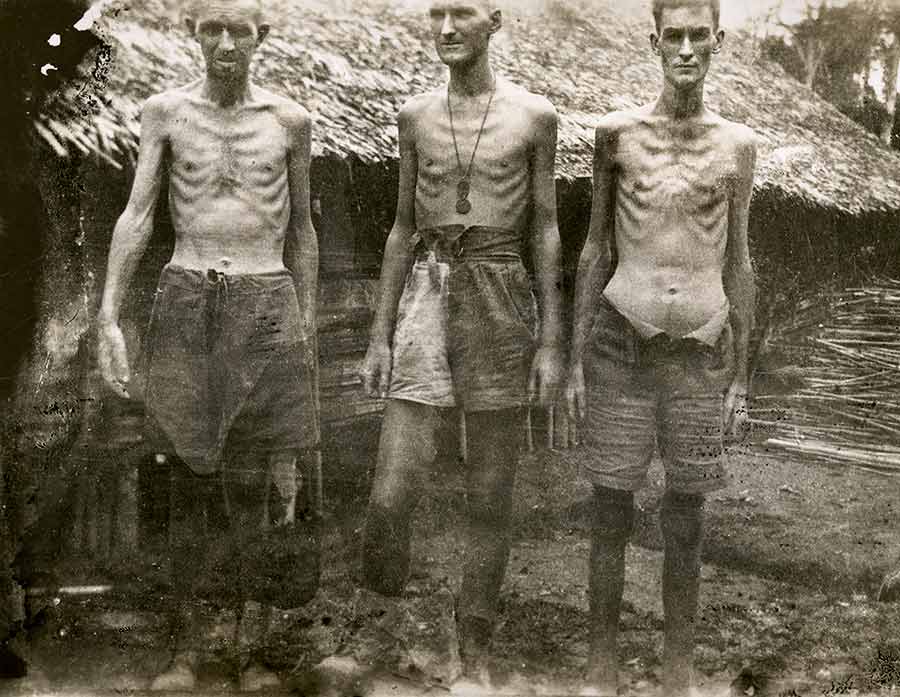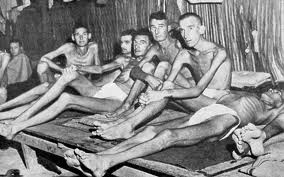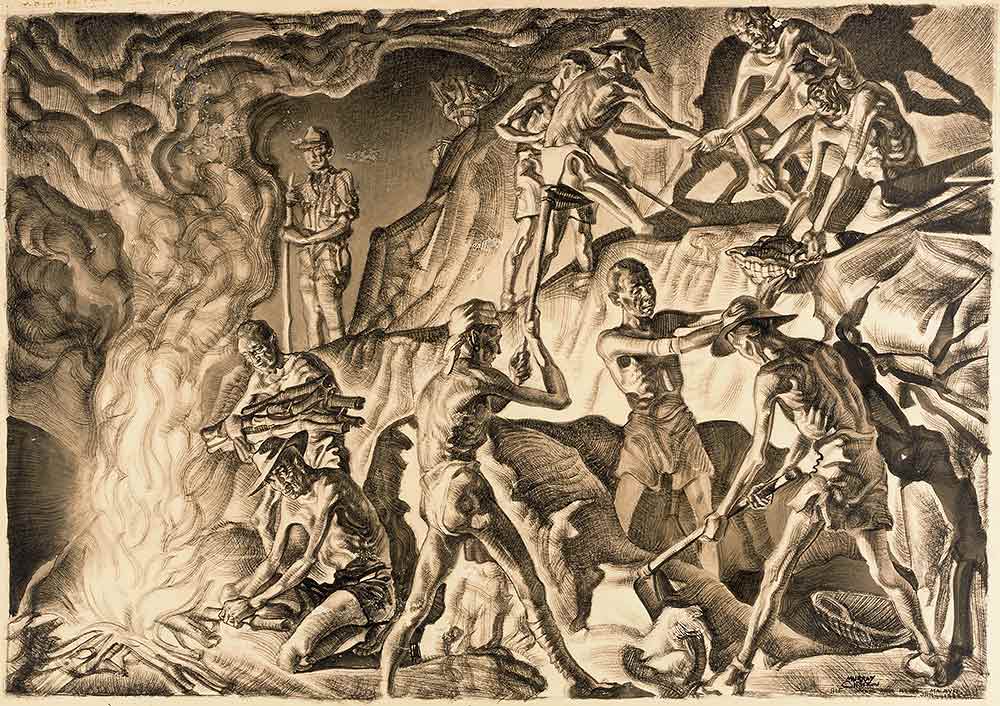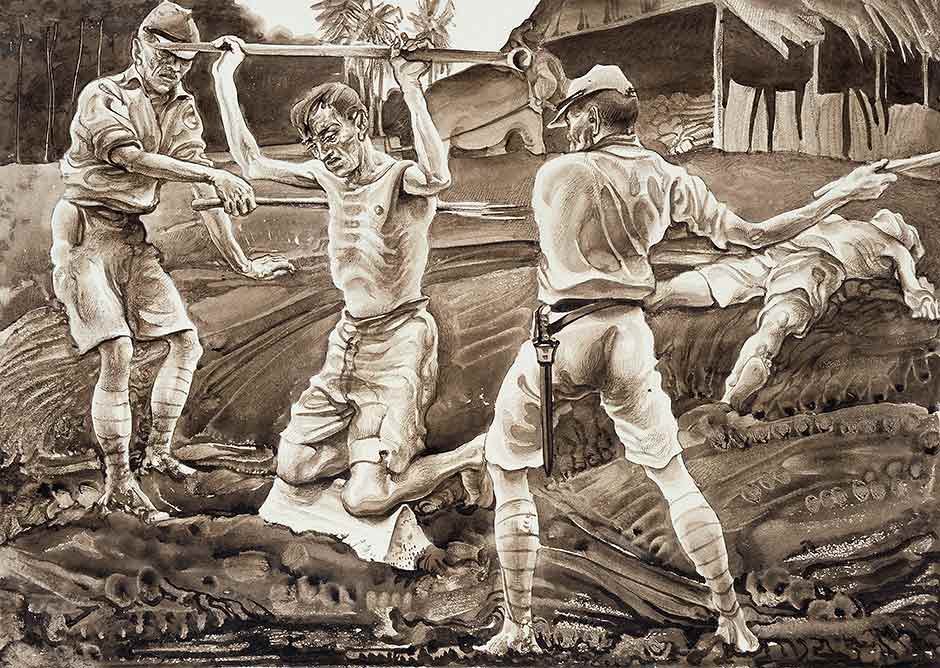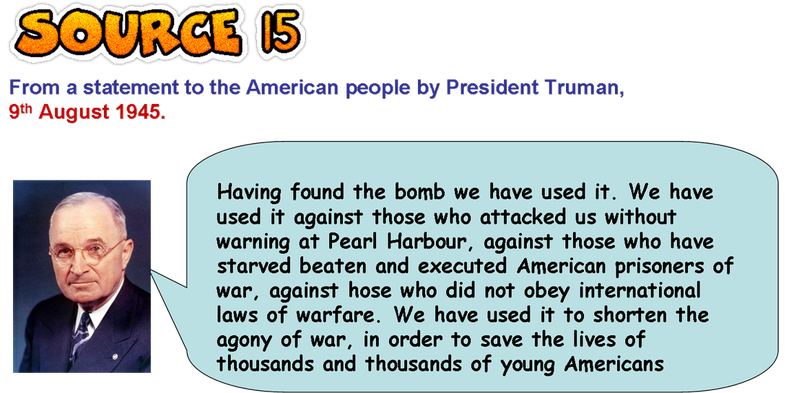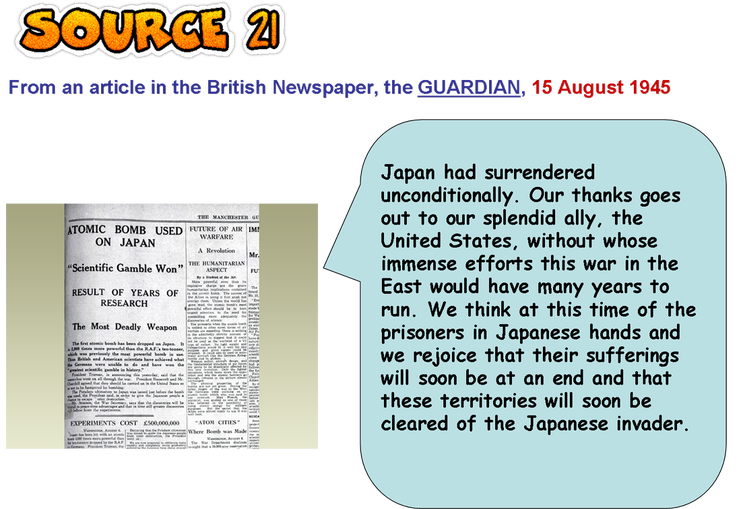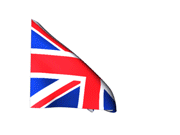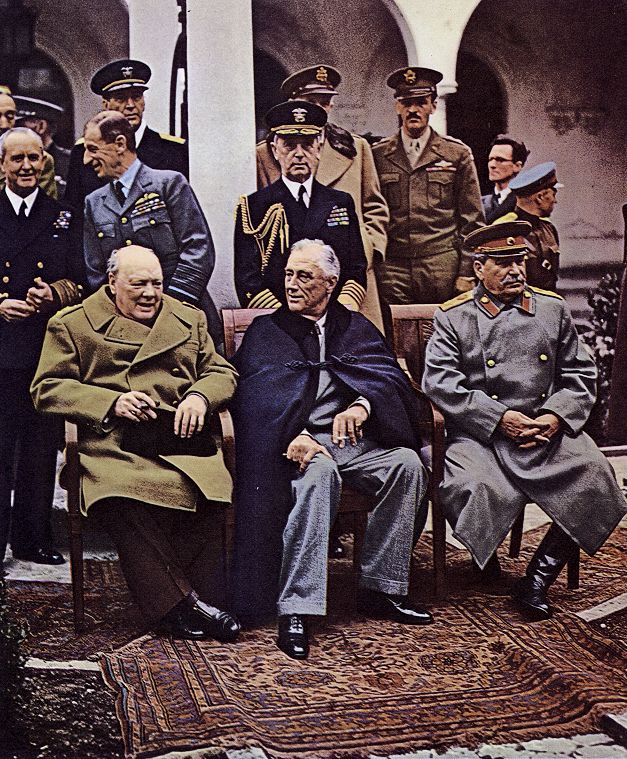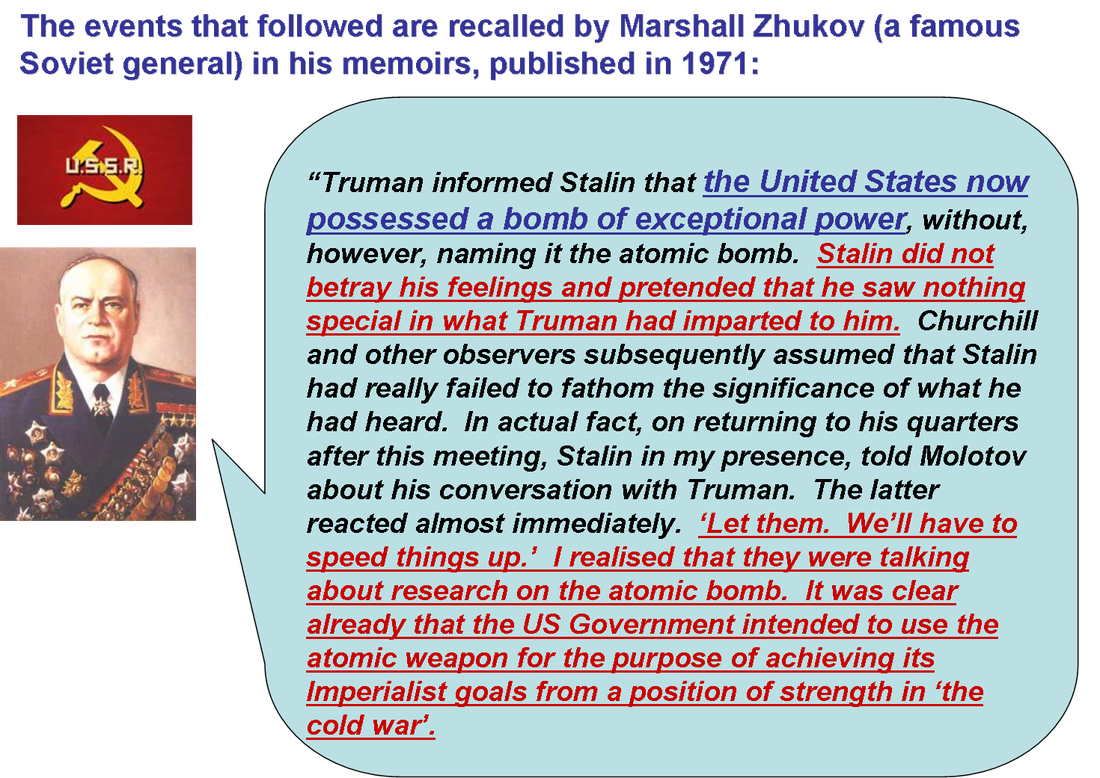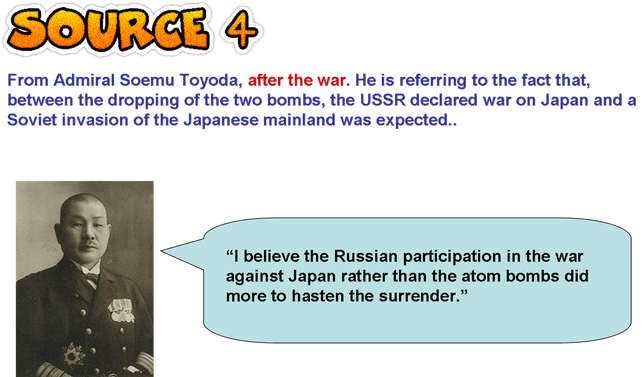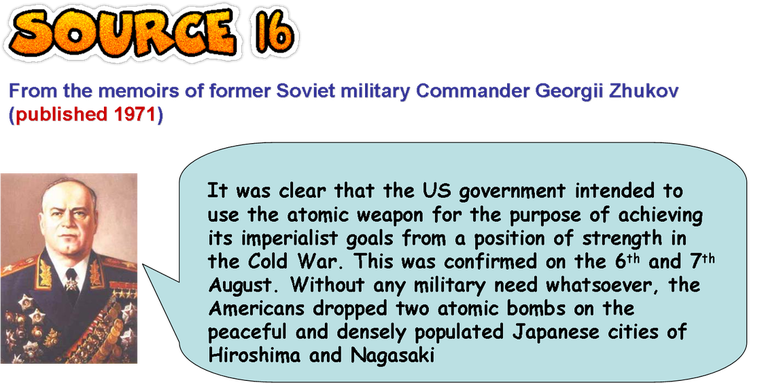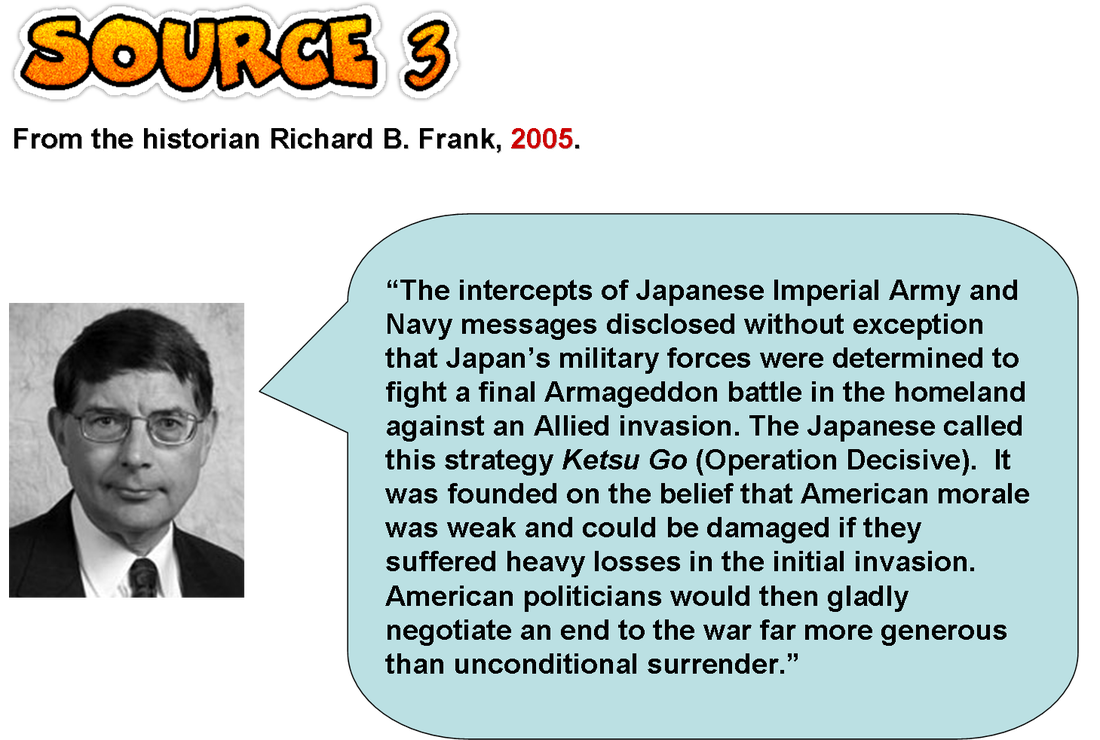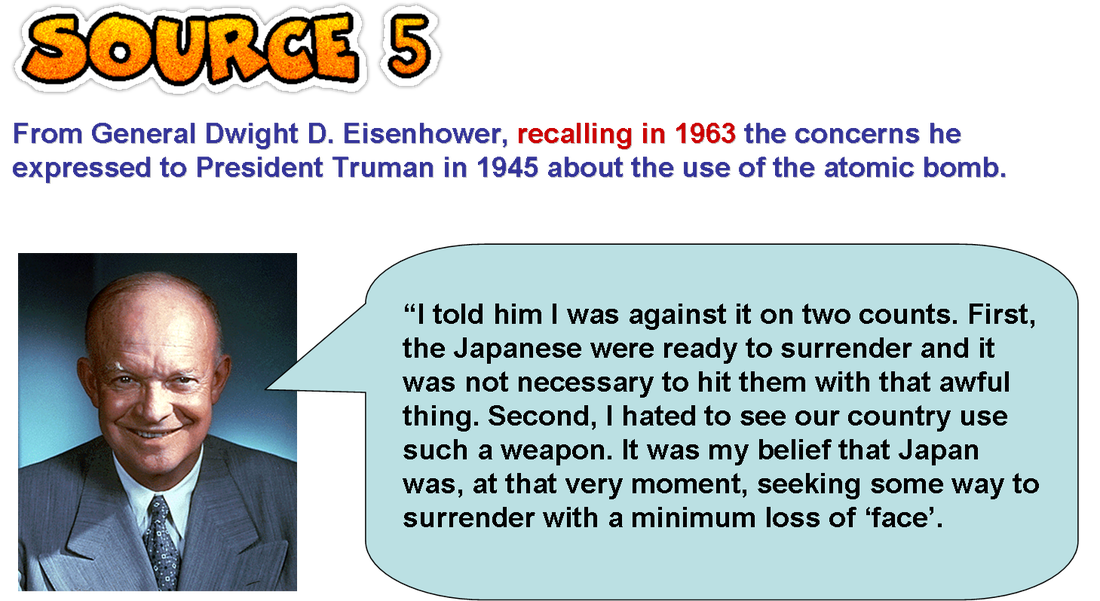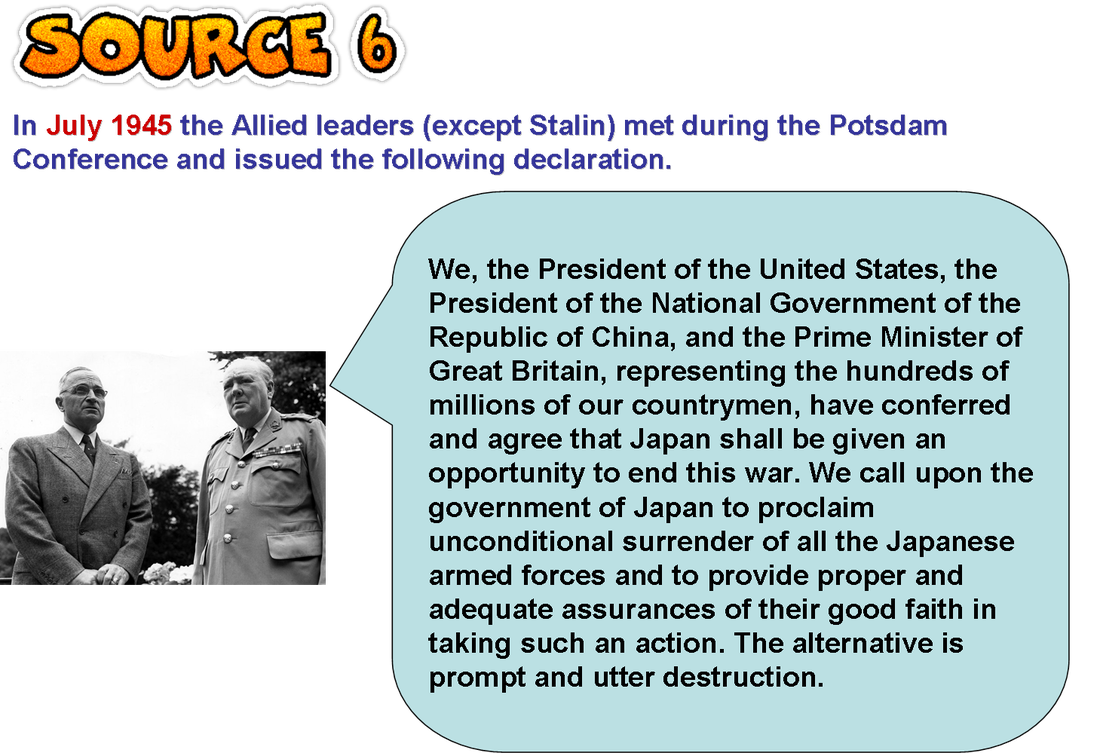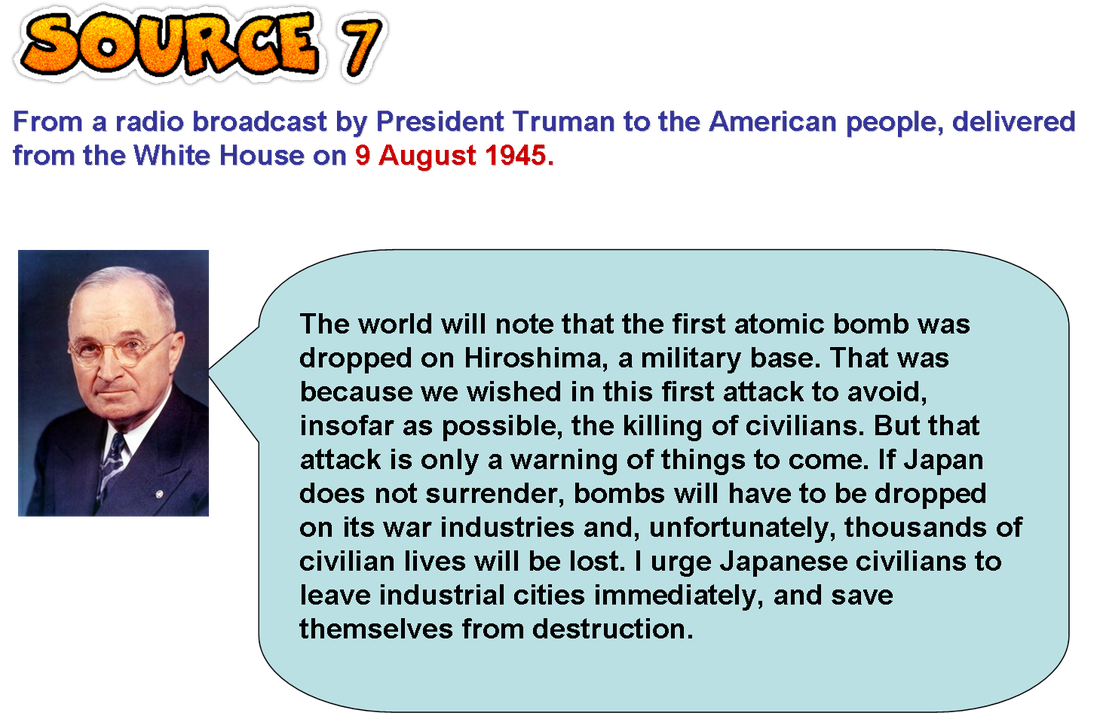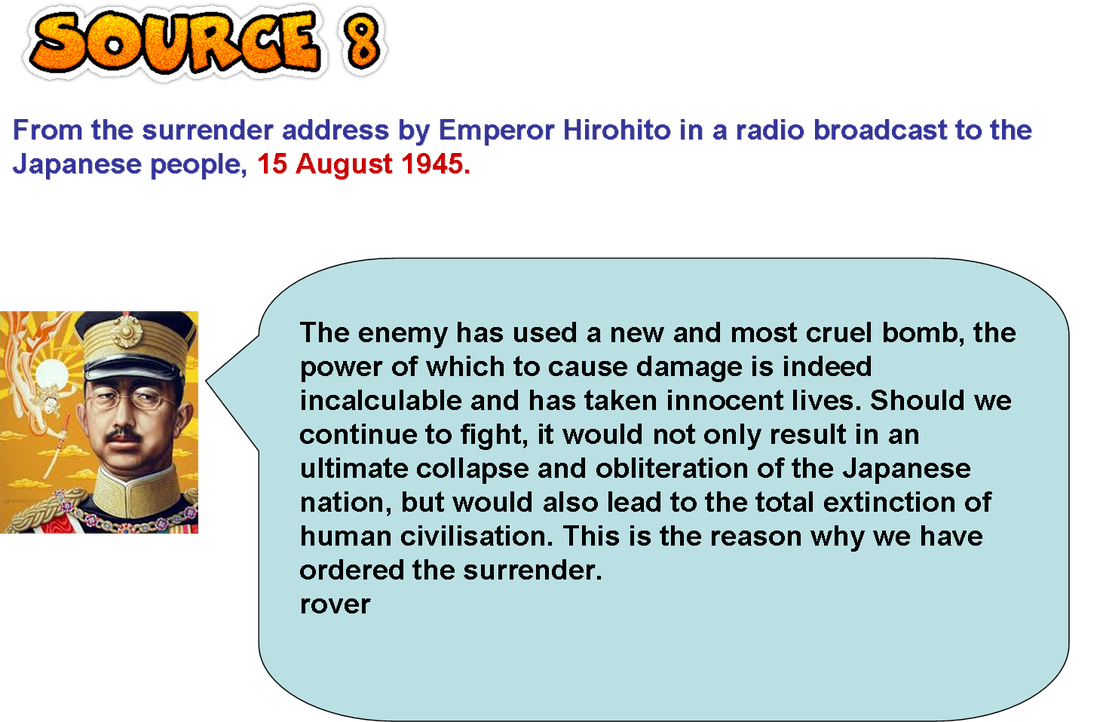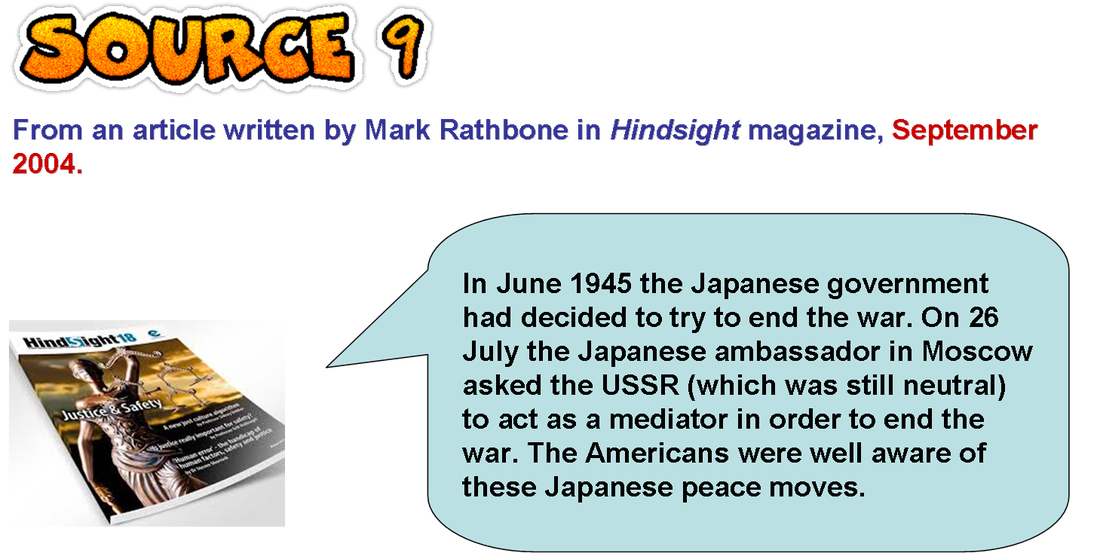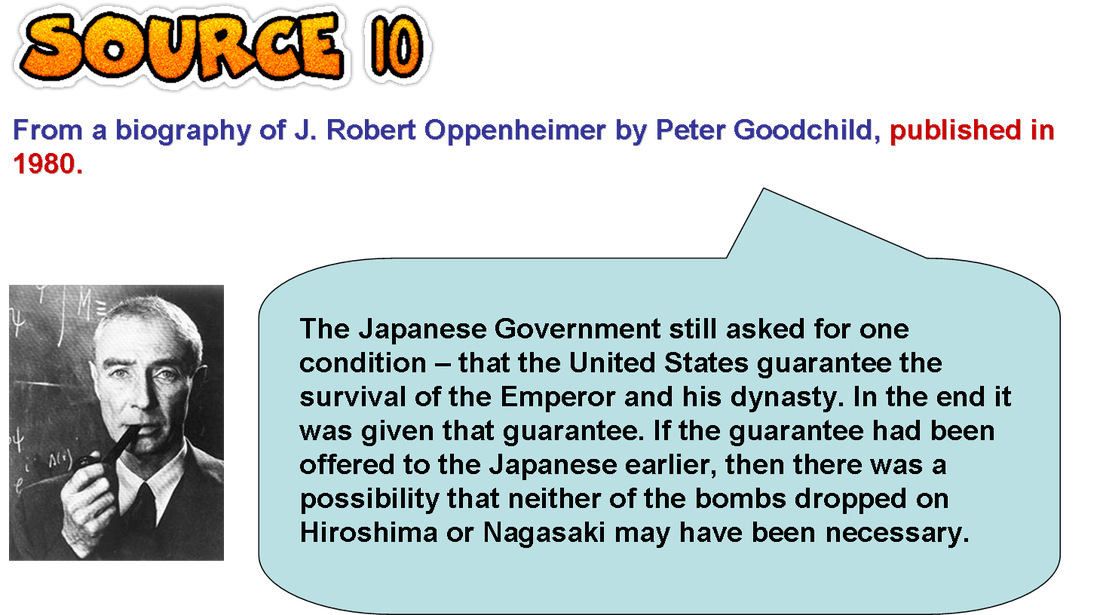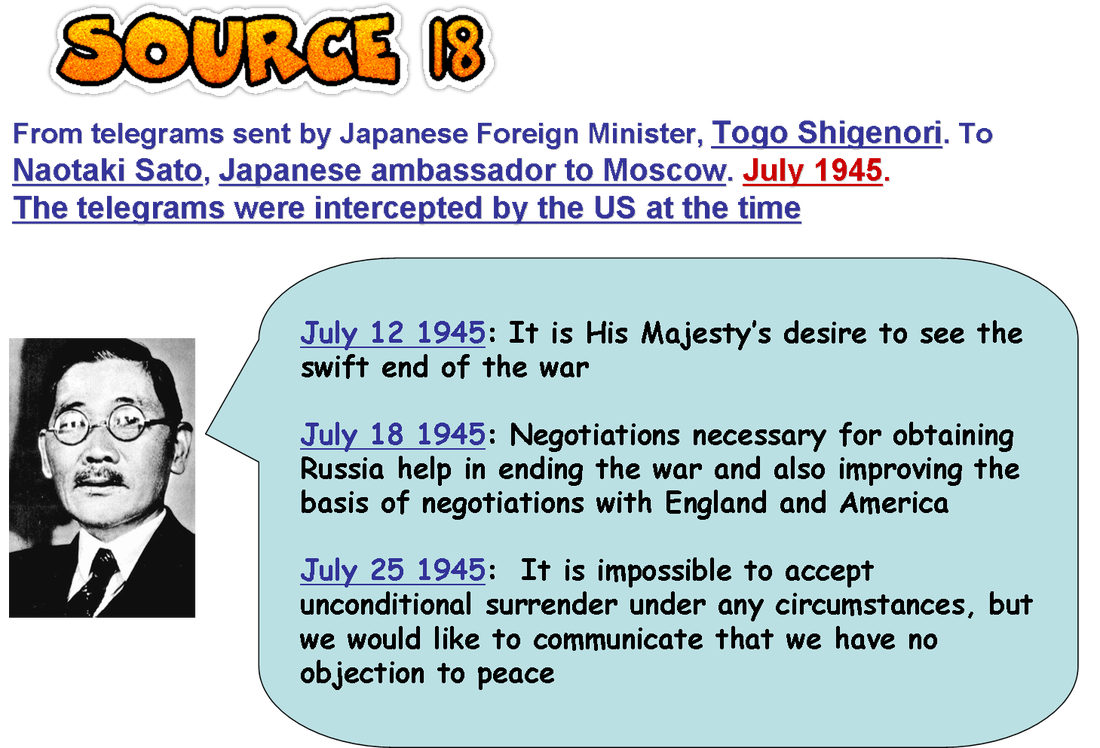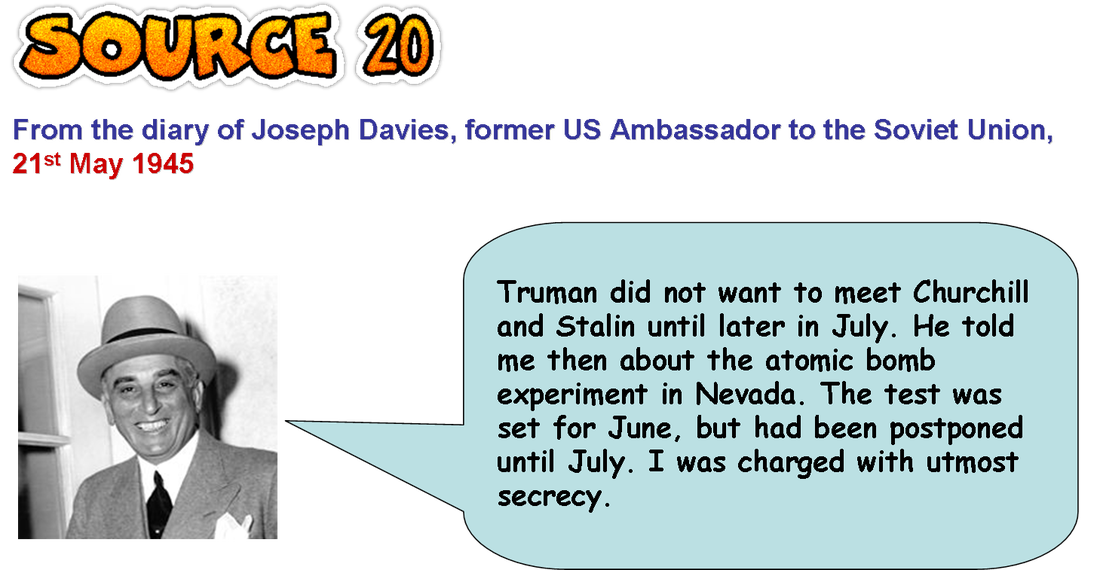This section will explain the background to the dropping of the Atomic bomb. It will also investigate the various theories about why the bomb was eventually dropped - one of the most controversial decisions in History
By 1944, American soldiers were getting nearer and nearer to Japan, capturing one Japanese held island at a time. This was a particularly bloody and cruel type of war. Japanese troops held out until the last, even in the most hopeless of positions. Surrender was dishonourable to them and it was considered an honour to die for their country. KAMIKAZE raids were undertaken. These were Suicide bombers who would fly their planes, packed with explosives towards American ships. The US army suffered huge losses in this type of warfare as they painstakingly fought towards Japan. By 1945 they were getting close enough to plan for an invasion of the Japanese mainland. |
|
|
1945
By July 1945, the Japanese were in a desperate position:
|
|
|
|
|
Throughout the Second World War, a team of scientists in America had been working hard on a SECRET MISSION to produce an ATOMIC BOMB which they believed would be far more powerful than any weapon ever made.
|
The scientists had developed the atomic bomb, but the man who had to decide whether to use it was the President of the USA, HARRY S. TRUMAN (President Roosevelt had died earlier that year).
- At 8.15am on 6th August 1945, a B29 bomber called the Enola Gay (named after one of the pilot’s mothers) dropped the world’s first nuclear bomb on the Japanese town of Hiroshima.
- The bomb was nicknamed ‘Little Boy', after former President Roosevelt.
- The temperature at the centre of the explosion reached 300,000 centigrade, 50 times hotter than the surface of the sun.
- The mushroom cloud rose to 50,000 feet.
- Everything in a two-mile radius was flattened.
- The bomb at Hiroshima killed over 80,000 people immediately. Some people were vaporised – the only evidence of their having lived being a shadow of soot on the ground.
Speaking a short while later, Truman said “We have used it to shorten the agony of war, in order to saves the lives of thousands and thousands of young Americans”.
NAGASAKI BOMB:
On 14th August 1945, Japan surrendered. The Second World War was over.
NAGASAKI BOMB:
- Three days after the bombing of Hiroshima, a second bomb, nicknamed ‘Fat Man’, named after the British Prime Minister, Winston Churchill, was dropped on Nagasaki.
- This time 40,000 people died.
- More than 60% of the buildings in the city were destroyed.
- Many thousands were to die from injuries and radiation poisoning in the years that followed.
On 14th August 1945, Japan surrendered. The Second World War was over.
It was clear that this was a completely new type of weapon and a completely new kind of warfare. But there was no turning back. Nuclear weapons had been used. No one could be sure that they would not be used again.
The shocking human effects of the atomic bombs soon led many to question whether the bombs should have been dropped.
- The first western scientists, servicemen and journalists to arrive on the scene produced vivid and heart-rending reports describing a charred landscape populated by hideously burnt people, coughing up and urinating blood and waiting to die.
- As questions regarding the ethical implications of the attacks grew, the US Air Force and Navy both published reports which claimed that the conventional bombing and submarine war against Japan would have soon forced her to surrender.
- Joseph Grew, America’s last ambassador to Japan before the war, also publicly alleged that the Truman administration knew about, and ignored, Japanese attempts to open surrender negotiations with the USA using the USSR as a mediator e.g. Stalin, the leader of the USSR, told US President Truman at a conference at Potsdam that he had received a telegram from the Japanese Emperor asking for peace. In fact, the Japanese offered to surrender on 3rd August, but their offer was rejected because if was not an ‘unconditional offer’.
- At this time, another interpretation emerged: the atomic bombing of Japan had been motivated by a desire to demonstrate the US’s military might to the USSR (Russia).
- The moral aspect of the attacks upon Hiroshima and Nagasaki continues to divide historians. While some argue that the terrible human cost to the Japanese population can never justify the use of such weapons, others maintain that it would have been immoral if atomic weapons had not been used to end the war as quickly as possible.
- The historian J. Samuel Walker wrote in 2005: “The fundamental issue that has divided scholars over a period of nearly four decades is whether the use of the bomb was necessary to achieve victory in the war in the Pacific on terms satisfactory to the United States”.
Here are 4 key theories about why the bomb was dropped:
- Some Americans believed that Japan would never surrender. Experts calculated that HALF A MILLION SOLDIERS would die if they had to invade Japan. Those who argue in favour of the decision to drop the atomic bombs believe that there would be massive casualties on both sides if a planned Allied invasion of Japan went ahead.
- US President Truman stated in 1952 that he had been advised that US casualties would range from 250,000 to one million men. In addition, a large number of Japanese military and civilian casualties were expected. Estimates at the time of Japanese deaths from an invasion ranged from several hundreds of thousands to as high as ten million.
- The great loss of lives during the battle of IWO JIMA and other Pacific islands gave US leaders a clear picture of the casualties that would happen with a main land invasion. The battle for Iwo Jima (Feb – March 1945) had lasted 36 days. Of the 22,060 Japanese soldiers who had defended Iwo Jima, 21,844 died either from fighting or by ritual suicide. Only 216 were captured in battle. The Americans suffered 26,000 casualties, including 6,800 dead.
- The US military had nearly 500,000 Purple Heart medals manufactured in anticipation of potential casualties from a planned invasion.
- The Japanese government had ordered Japanese civilians to fight against any invading force. This is what Kasai Yukiko, a high school pupil, was told to do by her teacher if the Americans invaded in 1945: “Even killing one American soldier will do. Use your awls (woodwork tools) for self-defence. Aim for the enemy’s belly. Understand? The belly. If you don’t kill at least one you don’t deserve to live.”
- Supporters of the bombings also emphasise the strategic significance of the two targets.
- Hiroshima was a military headquarters for southern Japan. It was a communication centre as well as containing several military factories.
- Nagasaki was an industrial centre and also of great wartime importance.
- Some historians see ancient Japanese warrior traditions as a major factor in the resistance of the Japanese military to the idea of surrender. According to one US Air Force account: “The Japanese code of bushido – ‘the way of the warrior’ – was deeply ingrained. The concepts of Yamato-damashii equipped each soldier with a strict code: never be captured, never break down, never surrender. Surrender was dishonourable. Each soldier was trained to fight to the death and was expected to die before suffering dishonour. Defeated Japanese leaders preferred to take their own lives in the painful Samurai ritual of seppuku - (called hara kiri in the West). Warriors who surrendered were not deemed worthy of regard or respect.”
|
During the war, Britain, America and the USSR (Russia) had joined together in an alliance to fight Germany and Japan. This was called ‘The Grand Alliance’ and they were known as the ‘allies’.
However, it was an uneasy alliance and by the summer of 1945 it was beginning to collapse.
However, it was an uneasy alliance and by the summer of 1945 it was beginning to collapse.
WHY DID THE GRAND ALLIANCE BEGIN TO COLLAPSE?
- DIFFERENCES: Britain and America were DEMOCRATIC counties. The USSR was a COMMUNIST country. Democratic countries and communist countries are governed in very different ways.
- Democratic countries believe that everyone should have a say in how the country is governed. People have the right to criticise the government and can live their lives with limited government interference.
- Communist Russia was a ‘totalitarian’ state. People in Russia had little freedom. The Communist Party was the only political party allowed. The state controlled virtually every aspect of people’s lives.
- SUSPICIONS: Britain and America were suspicious of Josef Stalin, the leader of the USSR. They believed that he wanted to spread communist ideas to other countries. They saw the USSR as a threat to democracy in the ‘free’ (non-communist) world
- As the war in Europe drew to a close by the summer of 1945, the Russian army had taken over countries in Eastern Europe and set up communist governments. This confirmed to Britain and America that Russia was a threat that needed to be dealt with.
- OPPOSING DEMANDS: Churchill, Stalin and Roosevelt met at a Conference at Yalta (in the Crimea) in February 1945. At this conference, Stalin demanded that the USSR should have a say in the type of governments set up in eastern Europe after the war. These kinds of demands worried the western leaders.
- At this conference, Stalin also announced that the USSR would declare war on Japan in August (once Germany had finally been defeated – as it was in May 1945). This worried Britain and America, as they feared that Stalin wanted to extend Soviet control into the Far East.
- CHANGE IN LEADERSHIP: In April 1945, President Roosevelt died. He was succeeded as US President by Harry S Truman.
- In July 1945, Truman met Stalin at a conference in Potsdam (Germany). By this point Germany had been defeated.
- At this conference Truman hinted to Stalin that the US had an atomic bomb.
- A WARNING TO STALIN? Some historians, such as Gar Alperowitz, writing in 1965, believe that the ‘real’ reason for dropping the atomic bombs on Japan was NOT to end the war in the Pacific quickly but as a warning to Stalin – to let him know that his attempts to spread communist would be resisted – by force, if necessary.
- TIMING: The timing was also important. Up to this point the USSR had been focused on fighting against the Nazis in Europe. Now that Germany had been defeated, Stalin was about to turn his attention to the Far East, and declare war on Japan. The dropping of the atomic bombs were intended to end the war in the Pacific before the USSR could get involved, gain territory and spread communism.
There is no doubt that Stalin saw the dropping of the atomic bomb as directed more at Russia than Japan. Stalin told one of his colleagues: “They are killing the Japanese and intimidating us”.
The following pages contain a number of sources written by various people about the dropping of the atomic bombs. Some of the writers argue that the bombs should never have been dropped. Other writers support the bombings. Have a good look over these and think about things like their Usefulness or reliability. Think about who is writing it and what their views may be. Think about the Date its published and the message it is trying to get across


